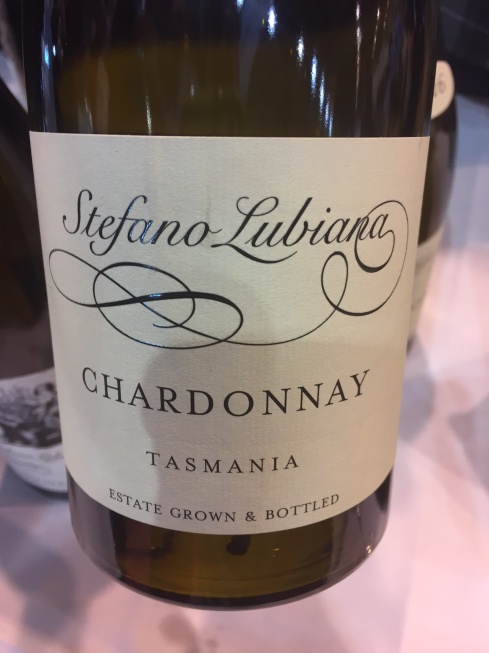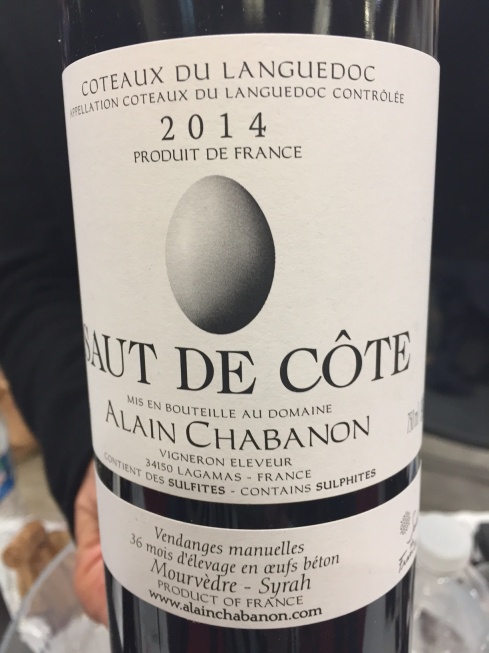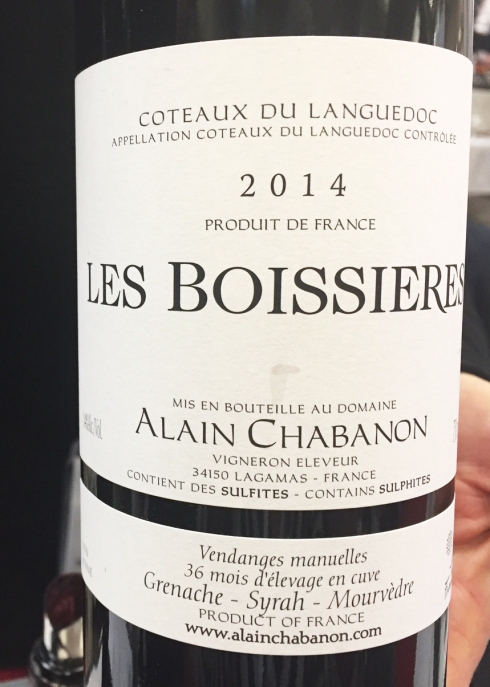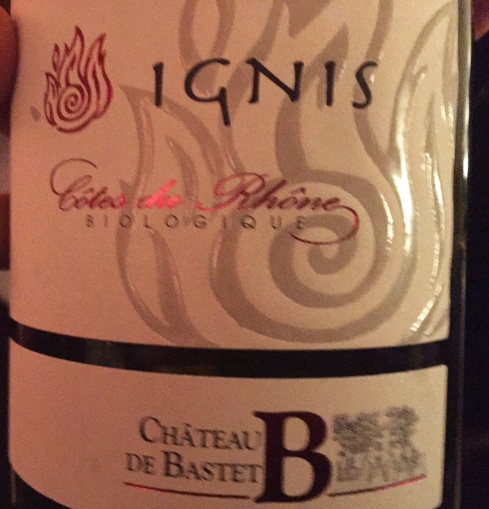via Clean organic wine from the beautiful south of France and beyond
Clean organic wine from the beautiful south of France and beyond
18 FebThe Wine Wanderers have been taking a break exploring some of the world’s greatest spirits and brews at the heart of their origins. Mezcal, bourbon and craft beer were highlights of our trips to Mexico, Kentucky and Copenhagen in 2017.
Being wine wanderers, however, we couldn’t stay away from France, and winter has seen us re-evaluating malbec in Cahors, discovering Bugey in Bourg-en-Bresse and tasting some great biodynamic drops at Millessime Bio, the world’s largest organic wine fair, in Montpellier.
Why Montpellier? It’s in the heart of Languedoc-Rousillon, where more than half France’s organic wine is produced, fuelling a movement that is gathering pace across the globe, with a 20%-plus sales increase last year in the UK and France alone. In 25 years the fair has grown from 10 to 1000 exhibitors, and although local producers dominate, contingents were present from 15 countries includer Spain, just across the border, and Italy to the east, which vie with France as leaders in organic wine production. Surprisingly, labels from as far afield as Washington and Oregon in the northwest USA and Australia were represented.
Stefano Lubiana actually came all the way from Tasmania in person to present his chardonnays which have all the finesse of a fine white Burgundy;
close your eyes and you could be sipping a buttery Meursault. It’s why he thought it was worth risking a punt to travel 11,000 miles to take a stand in a country which has plenty of its own exquisite chardonnay just up the road in Burgundy. “Younger buyers are fascinated by our own take on chardonnay and the fact it’s all-organic,” says Lubiana, whose ancestors hail from Croatia.
Are they buying? “It’s hard to tell where our wines are going, but they’re certainly being distributed in Europe,” he says. “After our first showing at Millessime Bio we shipped a whole container to Sweden,though we have no idea where the importer sent it from there, so we definitely thought it was worth coming back.”

When it came to sampling more local offerings, the Wanderers headed straight for the stand of Alain Chabanon, whose biodynamic offerings first brought us to Languedoc. After taking his time to decide it was worth converting to organic production, this once conventional grower went the whole hog and now does the full mystical biodynamic thing. This involves watering, pruning and harvesting in harmony with lunar cycles and anointing the soil with water stirred for an hour with powder from cow horns which have been stuffed with manure and buried for a winter. Weird? Blame the Austrian philosopher Rudolf Steiner, who created the biodynamic movement; winemakers all around the world who have embraced it swear it’s worth all the love.

Visiting Chabanon’s vineyards by moonlight years ago was romantic, but the tasting which followed was sublime, and no less so in the harsh light of day at a trade fair. Chabanon’s reds are out of this world, the Wanderers particularly fond of Les Boissieres – mainly grenache with 10 per cent each of syrah and mourvedre – and his newest creation Saut de Cote, an unexpected, rich but fresh confection of 80 per cent mourvedre with 20 per cent syrah.

The Wanderers always prefer to taste wine with food, which changes its character completely, and so saved our appetites for the fabulous pale golden-toned roses which are the glory of the south of France for dinner at Le Petit Jardin, a highly agreeable restaurant in Montpellier’s old town. Chateau de Luc is a classic blend of cinsault and grenache from the Fabre family, winemakers since 1605. The rose perfectly partnered a sumptuous cream of chestnut soup, and the duck which followed was greatly enhnaced by Ignis, a superb biodynamic Cotes du Rhone from Chateau de Bastet made from 50 per cent of the syrah you would expect in this region and 50 per cent of the grenache which is so evocative of the neighbouring south.

Any notion that organic wine is only for the elite was banished the following night, when the Wine Wanderers enjoyed a succulent plate of local grilled shrimp at the casual Cafe Panacee in the eponymous cultural centre, washed down with a glass of local organic white wine. The price? All of 3 euros, the going rate all over Montpellier; the fact this drop of grenache blanc blended with other indiigenous grapes was “bio” was simply par for the course, a growing fact of life in this student city where the young are underpinning the growing call for organic everything.
Big black wines to see winter out
3 MarJust when we thought an early spring had arrived the weather turned brutal again, and the Wine Wanderers have been getting through the last of winter with some big, black wines we don’t drink at ot…
Big black wines to see winter out
3 MarJust when we thought an early spring had arrived the weather turned brutal again, and the Wine Wanderers have been getting through the last of winter with some big, black wines we don’t drink at other times of the year.
Not to say we eschew rich reds altogether – we always enjoy a good syrah with a hunk of lamb – but there are wines which pack so much punch we approach them with caution, including our beloved Barolo, reserved for special occasions.
Biggest and blackest of all wines is malbec, too rarely tempered with a soupcon of anything, which we tired of for a while after tasting more than 70 in a week on a visit to Argentina(wine-makers here are doing much more interesting things with other varietals), but have now acknowledged the need to revisit.
Malbec, however much the Argentinians claim it for their own, was the pride of Cahors in south-west France before the wine-makers of Mendoza decided to get seriously stuck into it. While always big and in the hands of the Argentinians pretty reliable, it can be a one-note wine devoid of any subtlety. However, the Wanderers got the chance to appreciate its finer nuances courtesy of Chateau de Mercues, a distinguished domaine which makes some very fine bottles indeed in the Cahors region.
The Wanderers thought the Prestige Cuvee 6666 2014 was as good as it was going to get at a recent London tasting until the very special Icone WOW 2009 from sister domaine Chateau de Haute-Serre was poured – simply sumptuous. Annoyingly, there is not yet any UK distribution for these bottles and vintages, but Dulwich Vintners does sell Mercues’s slightly less elevated Grand Vin at prices from £18 per bottle, depending on the vintage. One delightful way of getting Mercues’s top wine would be to visit the vineyard, which is attached to a Relais & Chateaux hotel with a Michelin-starred restaurant, and pick up the 6666 for 28 euros a bottle, the Icone an eye-watering five times as much at the cellar door.
Encouraged by how fine a malbec can be in the hands of good winemakers, we decided to sample an award-winning Argentinian example from Aldi, their Exquisite Collection Malbec, which has bagged a Which? Best Buy award as well as winning Silver in competition. It was fine, but paled into insignificance beside an astonishing big black bottle from France Aldi is currently fielding. Bonfleur Languedoc Reserve 2011 may not contain any malbec whatsoever, but for a syrah/grenache/mourvedre blend, always a good bet for body and flavour, it is absolutely huge, positively forcing you to sip and savour rather than quaff.
The secret is the age – this wine was found lying around the chateau by the new owners of the domaine, Mas des Belles Eaux. It had somehow been forgotten for four or five years, and has gained enormously in complexity during that time. Tasting as good as a bottle three times the price, this £6.99 wonder is one to bag now before the limited stock vanishes forever; note Aldi offer free delivery and allow you to make up your own case in the unlikely event you wouldn’t want to buy at least six of these(we are about to order our next half-dozen, if there are any left).
Another limited edition offering is from Lidl – an inky-looking syrah which somehow has been listed in their “Naturally Light” range. That’s because their MW taster found “freshness” in Cave du Tain, a rich Rhone with a deep colour and slightly gamey taste. But unlike some malbecs, it only looks inky and doesn’t actually taste of black ink!
Summer in a bottle – gorgeous golden pinks from Provence and surprises from further afield
5 JulIn a midsummer made for pink wine drinking, the Wine Wanderers have challenged themselves to reconsider roses made outside the South of France. It was a wrench; it’s hard to turn away from the beautiful golden-pink wines which characterise Cotes de Provence and have a quality mostly absent from pinks made elsewhere. It’s what Jean-Michel Deluc, former head sommelier of the Paris Ritz, speaking of the Clos de l’Ours CdP he sells through Le Petit Ballon, so aptly describes as “a stony minerality”.
Our prejudice against deeper-pink wines which often lack any hint of minerality has been fed over the years by some horrid Rose d’Anjou and even nastier “blush” zinfandel first encountered when the Wanderers lived in California. It was a shock to return to these shores and find that white zinfandel had followed us – but we were close enough to France to pick up endless five-euro bottles of Cotes de Provence in French supermarkets which never disappointed, despite the bargain basement price.
CdP has now made it on to UK supermarket shelves, riding the crest of a wave of Brits’ preference for pale pink roses, but costs twice as much here as it does in France, thanks to the duty. The Wanderers enjoyed Laithwaite’s gorgeous golden-pink Domaine Les Gres(£10.99 or £9.89 if buying 12) but felt it was a bit pricey. At least both Sainsburys and Waitrose, whose own label CdP’s are decent value on promotion if also pricey otherwise at £8-9, have ramped up their range of pinks in light of sales of tens of million bottles every year and made some good finds elsewhere.
It’s not only in Provence where a preponderance of grenache makes for a great drop. Having established on a visit to Langedoc-Roussillon how good winemakers there are at blending this grape with syrah(viz. the excellent value L’Or du Sud by Foncalieu, £5.49 at Lidl), we ventured further north, enjoying a £6 Winemaker’s Selection Cotes de Rhone from Sainsburys, which also blends grenache with Syrah. Ditto an £8 Barrihuela Rioja Rosado – here the grenache is spelled garnacha – perhaps a little finer than the excellent value £4.99 Rioja rosado from Lidl.
Laithwaites’ Pillastro Rosato from Puglia presented the first challenge to our prejudiced palates, not only because it was a slightly suspect strawberry pink, but because the grape was primitivo, the progenitor of zinfandel. While not as sweet and nasty as the “blush” zinfandel we used to drink in California, the Pillastro was still too jammy for our taste, and a reminder that primitivo/zinfandel does have an inherent sweetness which is subsumed by the alcohol when it appears as a joyous red. Similarly, we love red pinot noir, but not the New World pink pinot noirs tasted from various sources – a bit sweet and a bit fizzy for our tastebuds.
Specially worth mentioning is a great rose from Greece we approached with anticipation, remembering a wonderful cheap as chips rose enjoyed with barbecued pork in a remote corner of Mykonos. Twin Sails, a Waitrose exclusive, is made from the xinomavro grape, another variety usually reserved for reds but this one performing perfectly as a fragrant pink with not a hint of unwanted sweetness. Fabulous value at an everyday price of £5.99, all you should really have to pay for a wine that looks and tastes like summer in a bottle.
Amalfi – surprisingly great wines as well as super lemons
6 MayThe Wine Wanderers were recently on the Amalfi coast in search of the world’s finest lemons. We found them, in droves(or should that be groves?), but what we also stumbled across, quite unexpected…
Source: Amalfi – surprisingly great wines as well as super lemons
Amalfi – surprisingly great wines as well as super lemons
6 MayThe Wine Wanderers were recently on the Amalfi coast in search of the world’s finest lemons. We found them, in droves(or should that be groves?), but what we also stumbled across, quite unexpectedly, were some of Italy’s best and least-celebrated wines.
Campania was not known for its winemaking skills as recently as a decade ago, but boy, have they come a long way in this land of fine mozzarella, fabulous seafood and, indeed, superlative lemons. They are making excellent fiano, falanghina, Greco di tufo and aglianico in Campania, as well as some excellent white blends – and the Wanderers were lucky enough to be staying at two of the best hotels in the region, where some serious thought has been given to showcasing Campania on the wine list.
First stop was the Santa Caterina in Amalfi, where we tasted that superb aglianico. The Wanderers first tasted this sumptuous, inky red in neighbouring Basilicata, where it has an AOC, and did not realise production was more widespread. A Donnaluna 2011, actually 90 per cent aglianico tempered with 10 per cent primitivo, was a voluptuous drop to accompany an inventive dish of burrata, poached egg and asparagus; the Greco di tufo “Devon” from Cantine Antonio Caggiano Taurasi which preceded it was crisp, dry and refreshing.
Sitting over the sea next day with an excellent seafood risotto, it was fitting to be served a splendid falanghina from Feudi di San Gregorio. But even better was a Furore blend of 60 per cent falanghina and 40 per cent indigenous biancolella. Furore is named for a wine village just up the coast from Amalfi; this very excellent example came from from Cantine Marisa Cuomo.
On to Sorrento and one of the world’s oldest and grandest grand hotels, the exemplary Excelsior Vittoria, where they actually have a live pianist serenading guests in the breakfast room every morning. Dinner is served in the Michelin-starred Terrazza Bosquet, where maitre d‘ Luciano gave us more Campania whites which knocked our socks off. With scampi from the Messina Straits in Sicily we had the smokiest and most minerally fiano de avellino Colli di Lapio from Cleria Romano. And a Per Eva Costa d’Amalfi falanghina blend from Tenuta San Francesco stood up beautifully to a dish of orzo risotto perfumed with black garlic and candied zest of Sorrento lemons from the hotel garden beneath a bed of delicate white cuttlefish.
Although the blue lobster with bisque reduction sauce and caulifower foam must be the finest dish cooked anywhere on the Amalfi coast, we couldn’t blame Luciano for serving us a chardonnay from hundreds of miles north in Cortefranca,Lombardy. Ca‘ del Bosco is one of the best chardonnays in all Italy and possibly the world; it can stand side by side with Montrachet, big, buttery with a lemony nose and altogether gorgeous.
The Wine Wanderers rarely choose Italian wines outside Italy, yet they never fail to surprise and delight us in their country of origin. You have to be more careful with what you pick up in the British supermarkets, but Sainsburys does a pretty decent Aglianico del Vulture from Basiiicata at £8. They also have a drinkable Greco di Tufo on offer till May 17 at £8(normally £10), but the Wanderers preferred a somewhat more elegant version of this varietal from Tre Fiori, £10.99 at Waitrose. Wine Direct has that fine Feudi falanghina for £13, and Mad About Wines has the Furore for £21.85, the kind of price Campanian winemakers could not have dreamt their wines would fetch a decade or so ago.
Bordeaux – over-valued or over the moon?
15 MarThis past month the Wine Wanderers have been mainly drinking Bordeaux. This is an unusual state of affairs, as while we’ve had our socks knocked off in the past by exquisite swigs of Pauillac, Ma…
Bordeaux – over-valued or over the moon?
15 MarThis past month the Wine Wanderers have been mainly drinking Bordeaux. This is an unusual state of affairs, as while we’ve had our socks knocked off in the past by exquisite swigs of Pauillac, Margaux, Pomerol and Saint-Emilion, it’s been 20 years since we felt like investing a small fortune in a famous-name bottle.
The reason is that the elegance of these wines from houses which have been in the wine-making business for hundreds of years has led to many becoming investment vehicles which are now horribly over-valued. The wine may be good, but not so great that you can’t find much better value from star winemakers in other parts of France, not to mention Spain, Italy, Israel and the New World.
Nevertheless, we jumped at the chance to taste a few glasses of Chateau Angelus, one of the most famous Saint-Emilions, whose wines command three figures per bottle. One Wanderer had already met Stephanie de Bouard-Rivoal, the eighth-generation chatelaine now taking the helm at a house established in 1782. That was in Bordeaux itself; this time it was in London, at a Connaught lunch to launch a handsome tome Angelus has produced about its history.
The cost of lavishly entertaining wine writers and drinks buyers at meals cooked by Michelin-starred chefs is part of keeping these big names alive at a time when wine-lovers are gaining confidence no longer seek a prestige name as a badge of approval. Although the reds of Saint-Emilion and Pomerol, which rely heavily on merlot, are less likely to disappoint those shelling out than the left bank wines of the Medoc peninsula which are based much more heavily on cabernet sauvignon – one of the five permitted grapes in a classic Bordeaux blend along with cabernet franc, petit verdot, merlot and malbec. The result of cab sauv domination is lots of structure and ageing potential, but also heavy tannins which can take years to soften and become approachable.
One answer is to explore the“diffusion” wines of the grand chateaux, like the Carillon d’Angelus 2012, a mere snip at £42 per bottle, the Wanderers would happily have chosen to imbibe over the grand 2008 and 2006 vintages which followed, and which command three-figure sums. Angelus has a distinctive character, thanks to an unusually large proportion of cabernet franc; it is more elegant but less seductive than most right bank wines, which are almost universally voluptuous.
A good way to explore Bordeaux without breaking the bank is to invest £10 to £20 in a bottle from the high street, where superior buying power can bring the cost down a tad. Lidl, who made headlines a couple of years ago with an affordable “claret offensive”, is fielding a decent enough Chateau Jean de Gue Lalande de Pomerol 2012, £14.99, but more sumptuous is Marks & Spencer’s Moueix Saint-Emiliion at £14. Extraordinary value this month is Watirose Saint-Emilion, normally £13.49 but a positive steal on promotion at £9.99 from March 16 to April 12 – the perfect partner for your Easter lamb.
M&S also fields a lovely Margaux – Chateau Notton 2012 – but while a great special occasion bottle, it’s not exactly everyday drinking. That’s the thing about Bordeaux; mostly you have to pay dear for it, and you have to like that slightly austere inkiness which is the opposite of the easy-drinking, fruit-driven wine we have all become used to quaffing for single figures.